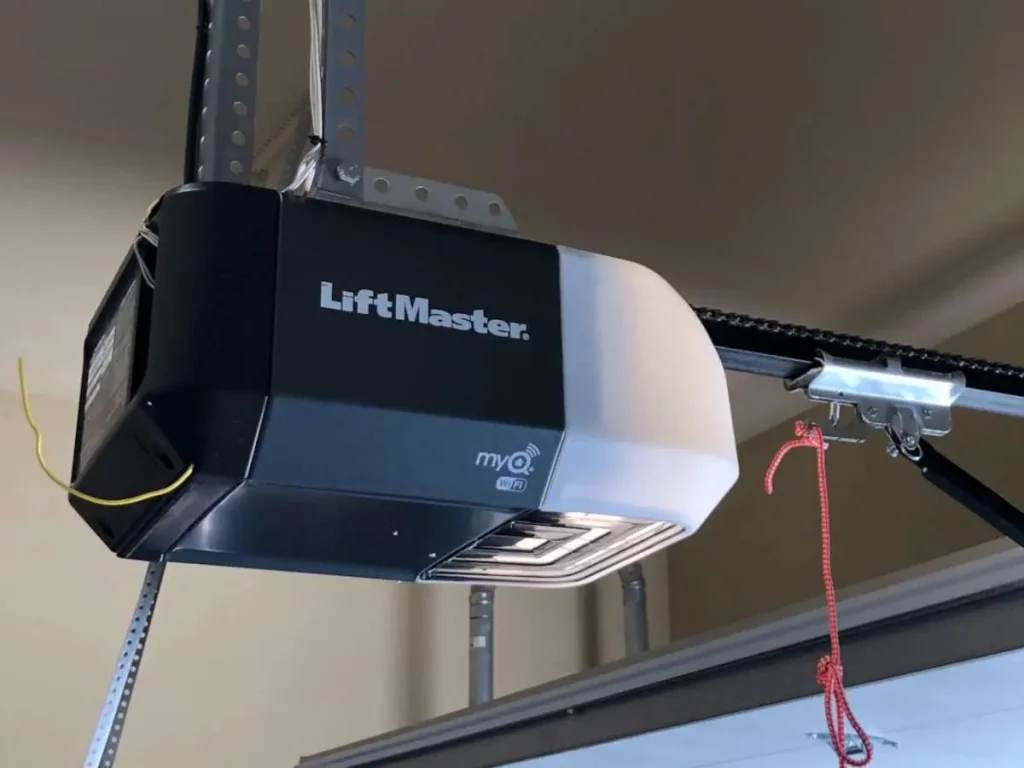If your Liftmaster garage door won’t close all the way, it can be a frustrating experience. Not only is it inconvenient, but it can also be a security risk. In this article, we’ll walk you through the most common causes of this issue and how to troubleshoot them.

Why is my Liftmaster garage door not closing all the way?
There are a few common reasons why a Liftmaster garage door might not close all the way. Here are some of the most likely causes:
- Obstruction: This is the most common cause of a garage door not closing all the way. Anything that blocks the path of the door, such as a toy, a piece of furniture, or even a pet, can prevent it from closing properly.
- Binding: The garage door may be binding or catching on something. This could be due to a bent or damaged track, a loose spring, or a misaligned door.
- Safety sensors: The safety sensors are designed to prevent injuries in the event of an accident. If the sensors are not working properly, they may prevent the door from closing all the way.
- Motor or opener malfunction: In rare cases, the motor or opener itself may be malfunctioning.
How to troubleshoot a Liftmaster garage door that won’t close all the way
Once you’ve determined the cause of the problem, you can take steps to fix it. Here are some troubleshooting tips:
Check for obstructions
The first thing you should do is check for obstructions. Make sure the area around the door is clear of any objects that could be blocking it. If you find an obstruction, remove it and try closing the door again.
Check for binding
If you don’t find any obstructions, check for binding. Try opening and closing the door manually to see if you can feel any resistance. If you do, you may need to adjust the door track or springs.
Check the safety sensors
If the door is binding, but you don’t feel any resistance, check the safety sensors. Make sure they are properly aligned and that there is nothing blocking their line of sight.
Call a professional
If you’ve tried all of the above and the door is still not closing all the way, you may need to call a professional. A qualified technician will be able to diagnose the problem and make the necessary repairs.
Additional tips
Here are a few additional tips to help you prevent this problem from happening in the future:
- Inspect your garage door regularly
Take a few minutes each month to inspect your garage door for any signs of wear or damage. This will help you catch any potential problems early on.
- Clean and lubricate the door track
A dirty or dry door track can cause the door to bind. Be sure to clean and lubricate the door track regularly to keep it working smoothly.
- Test the safety sensors monthly
The safety sensors are designed to prevent injuries in the event of a malfunction. Be sure to test them monthly to make sure they are working properly.
Additional troubleshooting tips
In addition to the general troubleshooting tips listed above, here are a few more specific tips that may help you fix a Liftmaster garage door that won’t close all the way:
- If the door is binding near the top, it may be due to a loose spring. To check the springs, open the door manually and look for any signs of wear or damage. If the springs are loose, you can tighten them using a wrench.
- If the door is binding near the bottom, it may be due to a bent or damaged track. To check the track, open the door manually and look for any dents or bends. If the track is damaged, you may need to replace it.
- If the safety sensors are not working properly, you may see a blinking light on the garage door opener. To test the safety sensors, open the door manually and place a piece of cardboard or a broomstick in the path of the door. If the door stops closing, the sensors are working properly. If the door continues to close, the sensors may need to be adjusted.
Conclusion
By following the troubleshooting tips in this article, you should be able to fix a Liftmaster garage door that won’t close all the way. If you’re not comfortable working on your garage door yourself, you can always call a professional for help.



Leave a Reply